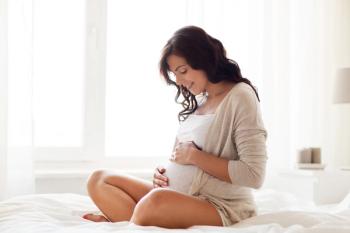
Opioid use in women with endometriosis
Nearly two-thirds of women newly diagnosed with endometriosis filled an opioid prescription within the first year, according to a US population-based claims study.
The retrospective analysis in the Journal of Minimally Invasive Gynecology found that more than 95% of the prescriptions were for short-acting opioids (SAOs) only, while 4.1% were for both SAOs and extended-release/long-acting opioids (LAOs).
Only 0.6% of women filled a prescription for LAOs alone.
“Endometriosis is a debilitating disease that can cause significant pelvic pain,” said principal investigator Sawsan As-Sanie, MD, MPH, co-chief of gynecology and director of minimally invasive gynecologic surgery at the University of Michigan in Ann Arbor.
“However, currently available treatments are not consistently effective for all women, and some may resort to opioids to manage their pain, despite the fact that opioids are not recommended for the treatment of endometriosis pain or any other chronic non-malignant pain condition. Long-term opioid use can be associated with significant harm.”
The investigators, who sought to better understand the scope of opioid prescribing patterns in women with endometriosis, performed a retrospective cohort analysis of data from the Truven MarketScan Commercial database for the period January 2011 to December 2016.
Women who filled an opioid prescription within 12 months of their first endometriosis diagnosis were compared to women who did not fill an opioid prescription during the study period.
The dataset comprised 58,472 women with endometriosis, of whom 61.7% filled an opioid prescription within the first year. While only 10% of women did not have any surgery in the first year after the first listed endometriosis diagnosis, the prevalence of patients who received an opioid prescription remained high, even after excluding opioids prescribed in the perioperative period (defined as anytime between 14 days before or 30 days after surgery).
After excluding prescriptions in the perioperative period, 49% of women with endometriosis filled at least one opioid prescription.
Compared to endometriosis patients who did not fill an opioid prescription, endometriosis patients who filled an opioid prescription had significantly higher baseline comorbidities (especially gynecological and chronic pain comorbidities), endometriosis-related medication use, mental health disorders and substance abuse.
“I expected that this would be common after surgery, but was especially surprised that these patterns persisted, even after excluding opioid prescribing outside of the surgical period.”
Patients who filled both LAO and SAO prescriptions had the highest total days' supply of opioids, proportion of days covered by prescriptions and morphine equivalent daily dose.
Baseline opioid abuse, opioid dependence, and opioid overdose were also significantly higher in the SAO and LAO-SAO groups compared to the non-opioid group: SAO: 0.3%, 2.2%, 0.2% respectively; LAO-SAO: 2.5%, 15.8%, 2.4% respectively; non-opioid: 0.2%, 1.2%, 0.1% respectively (P < .001 for all comparisons).
These patients also had the highest proportions of opioid switching and dose augmentation.
“While I do not recommend the use of opioids for the management of chronic pain in my practice, I was surprised by how commonly opioids are prescribed in women with endometriosis,” Dr. As-Sanie told Contemporary OB/GYN.
Dr. As-Sanie said an important next step in understanding and optimizing endometriosis care is further research into when opioids are prescribed relative to the diagnosis and treatment timeline, and the reasons surrounding the use of opioids in relation to other recommended treatments, such as combined hormonal contraceptives, gonadotrophin-releasing hormone agonists (GnRHa), progestins, and surgical excision.
__
Dr. As-Sanie receives royalties from UpToDate, and is a consultant to AbbVie, Myovant Sciences, Bayer, and Merck.
Reference
- As-Sanie S, Soliman AM, Evans K, et al. Short-acting and long-acting opioids utilization among women diagnosed with endometriosis in the United States: a population-based claims study. J Minim Invasive Gynecol. Published online June 9, 2020. doi:10.1016/j.jmig.2020.05.029
Newsletter
Get the latest clinical updates, case studies, and expert commentary in obstetric and gynecologic care. Sign up now to stay informed.











